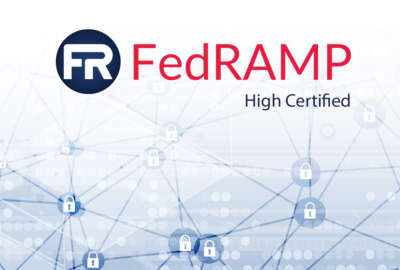Hubbard Radio Washington DC, LLC. All rights reserved. This website is not intended for users located within the European Economic Area.
GSA’s new contract to feed hunger for agile IT development services
With more business than it can handle, 18F hopes a new blanket purchase agreement for IT software development will prove the culture is changing. GSA will issue...
wfedstaff | April 18, 2015 1:09 am
The General Services Administration’s 18F has more business than it can handle. 18F has agreements with about 17 agencies that bring a constant stream of IT development work their way.
That hunger for agile or modular IT development is driving a new blanket purchase agreement for agile development services.
Greg Godbout, the executive director of 18F, said his organization has more than 100 employees and still can’t keep up with agency requests for help on IT projects.
Godbout said the large number of requests from agencies is “evidence of a broken marketplace,” and a desire to change.
“We open the doors and we were able to deliver on true user-centered agile work inside the federal government and everybody wanted the service,” Godbout said in an exclusive interview with Federal News Radio. “It was really never our intention to sort of build everything for the federal government. From the get go, we wanted to come around to this point where we started creating our own BPAs, our own marketplaces so that we could get the vendors. But to do that first, there were so many internal changes that the agencies needed to make in order to have the infrastructure to support this new way and that’s what we spent the last year doing.”
He said over the last year 18F used an assortment of projects to prove to agencies that user-centered design, agile or modular development for IT systems can indeed work in the government.
Now that there is all this demand, 18F needs help from industry. The BPA, which comes under GSA Schedule 70, is the path to bring more of that expertise to agencies.
GSA released a request for information for the new contract in early January and received 277 responses.
15-20 awards to start
Hassan Harris, a senior contracting officer at GSA overseeing the BPA, said during the industry day Tuesday in Washington that he would release the draft request for quote in the next week. After receiving some comments, he would issue the final RFQ under E-Buy by mid-February. Only vendors on Schedule 70 with Special Item Number 132-51 for IT services can bid on the BPA, Harris said.
Godbout said through 18F’s experience over the last year, they knew the desire for agile was growing quickly, but the huge response shows him just how eager vendors are to provide these services.
“We are getting a lot of positive response in working in this new fashion, in a true agile way and having an aligned agile acquisition process that is aligned with an agile development process,” he said.
Noah Kunin, the 18F’s director of delivery architecture, said GSA would make an initial award of 15-to-20 vendors in the April-May timeframe. The BPA to begin with would only be available for 18F to use.
After obtaining some experience and improving the RFQ, GSA would release a new solicitation in the August-September timeframe for the governmentwide version of the blanket purchase agreement.
Kunin said the award for the governmentwide BPA would come sometime in December or January.
“We are in discovery mode right now,” Kunin said. “We are taking the same approach to this contract as we build software. First, we get ready and launch the Alpha BPA, and then we learn from that experience, improve upon it and launch the Beta BPA.”
Kunin said the 15-to-20 vendors who win under the initial BPA are not guaranteed to be a part of the governmentwide contract, and would have to resubmit a bid.
Kunin also explained the prime evaluation factor — a 24 hour challenge to create a software product using an agile approach.
Godbout said the feedback from the RFI and industry day will help them ensure the challenge is done successfully.
“At the core of it, we are looking for companies whose core competency is actually building in the way that we work. In doing so, it’s a user-centered way. It’s working typically in open source, and coding and storing your code in a repository,” he said. “We are looking to take this sample, this sort of test, if you will, and show that you know how to do that work, and you can do it quickly. The key here is speed and responsiveness, and show us how you work. We will read the code. Let’s not make a 25-page document. Let’s build a Web page and then look at the code and see how you did.”
Through this 24-hour challenge, GSA will make the decision on the vendors to which it will award spots on the BPA. The RFQ will give small businesses extra evaluation points.
The time is right for agile
Harris also said GSA would make public the estimated dollar ceiling for the BPA when it releases the RFQ in February.
Some in industry have questioned why GSA needs to develop a new BPA instead of just training companies and contracting officers to buy using an agile approach off of the existing Schedule 70 or the Alliant IT services contract or the host of other multiple award contracts for IT services that are available throughout government.
Godbout said the BPA is needed to help change the government’s culture.
“For us we want to work in an agile way using time-and-materials. We philosophically believe time-and-materials is the alignment that aligns best with true agile development so we want companies who are specifically organized to execute on that,” he said. “Now imagine another small marketplace that does agile but with firm-fixed-price. We could get into philosophical debate as to whether that makes sense or not, but there are companies who do that, and they are organized in a specific way. What I’m trying to do is draw the specifics out so you have a nurtured marketplace that is companies continuously coming in, keeping the competition high on specific ways of delivering services. My hope is not that everyone in the government just uses our BPA, but learns from our model.”
That learning has been taking place over the last few years, and only now are agencies ready to support a major contract, said Ryan Panchadsaram, a deputy chief technology officers in the White House.
He said there are software development experts and engineers now who understand moving to an agile approach is the right thing to do for the government.
“This has been in the making. There always have been talented technologists across government, but they’ve never been all together in one room. [Former federal CTO] Todd Park started the Presidential Innovation Fellows, which was essentially parachuting Googlers, Microsofties and techies from the outside in government and when you started to pair them, you started to see something interesting happen,” Panchadsaram said in an interview with Federal News Radio. “You started to see them build really good, meaningful things for the American people. From there, Round 2 PIFs and creates 18F, and creates this place and space where more ideas can come to life. I think 18F is teaching us a lot of lessons — how to build things iteratively, how to build things open, how to build things more open and they are really setting the tone.”
He said the PIFs and 18F have brought the government a few important lessons like openness by putting code in a public repository so anyone can see it and improve upon it. The other lesson is around how best to solve problems by connecting with the user instead of the stakeholder.
“I think the thing that is missing and I think we are starting to see more of it especially from GSA’s 18F is the patterns that work. We don’t need to be reinventing the wheel every single time a digital project starts. I think 18F is starting to find those patterns and industry can do the same and show us that patterns that work for hosting, patterns that work for caching and patterns that work for forms and things like that. So every product that we start to undertake going forward becomes easier and easier.”
RELATED STORIES:
GSA’s agile RFI beginning of systemic change in IT acquisition
GSA’s 18F applies agile approach to hiring as part of growth strategy
USCIS eyes more collaboration, competition in move to agile development
Copyright © 2024 Federal News Network. All rights reserved. This website is not intended for users located within the European Economic Area.
Jason Miller
Jason Miller is executive editor of Federal News Network and directs news coverage on the people, policy and programs of the federal government.
Follow @jmillerWFED
Exclusive
Artificial Intelligence
Read more





